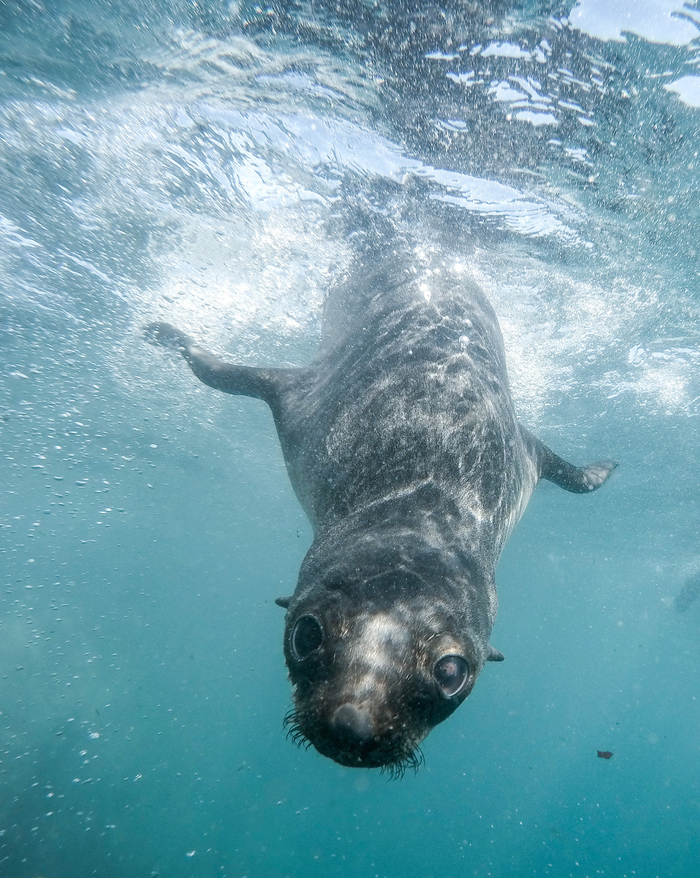A new genome assembly for Antarctic fur seals sheds light on their historic comeback after 19th century hunting.
In the late 19th century, the Antarctic fur seal was thought to be effectively extinct. After over a century of overexploitation driven by demand for the seal’s prized pelt, populations at known breeding grounds seemed to have disappeared, making further hunting impossible—and suggesting that the species may even have died out altogether. But in the 1930s, a small breeding population was discovered on South Georgia, a remote island in the southern Atlantic Ocean with no indigenous human inhabitants. Today, the Antarctic fur seal has made a comeback, with a population thought to number as many as two or three million—but a new G3 report by Humble et al. suggests this picture of the seal’s dramatic rebound is incomplete.
As a well-studied species that has undergone a remarkable recovery, the Antarctic fur seal (Arctocephalus gazella) holds great interest for conservation biologists and others seeking to understand the genomic impacts of population changes. In the report, a multinational team of authors describe an improved A. gazella genome assembly and a collection of 677,607 single nucleotide polymorphisms (SNPs), both useful tools for deeper dives into the genetics of the species. Their data also contain clues about how the Antarctic fur seal may have repopulated much of its former range.
Humble et al. found that linkage disequilibrium in A. gazella is on par with that of other vertebrates—a result that may seem strange given that such a severe population bottleneck should increase linkage disequilibrium. However, a separate analysis recently hinted that the population may not have dropped as low as once thought and could have included hundreds of individuals at its minimum. The Antarctic fur seal population also recovered within just a few generations, reducing the amount of time inbreeding and genetic drift would have had to impact linkage disequilibrium.
Although the species has a large, free-ranging population, the researchers found that some individuals were more inbred than others. This may be due in part to the fact that both males and females of the species return to the same breeding grounds each year with great precision—in one study, females were found to return to within one body length of the places they were born. Further, the species is highly polygynous, with one male often siring offspring with over a dozen females in a given season.
Information about fur seal population structure gave the team evidence that A. gazella may have persisted at a small number of the breeding grounds and thus was not limited to South Georgia, where it was first spotted after hunting ceased. Further investigation of how the seal recovered from being critically endangered, including the role of these final holdouts, could provide valuable information to guide conservation of other species facing extinction. And while A. gazella now numbers in the millions, any such insight may one day be important for its preservation, too: climate change and an increase in tourism has begun to put pressure on many Antarctic species, including the resilient fur seal.
CITATION:
RAD Sequencing and a Hybrid Antarctic Fur Seal Genome Assembly Reveal Rapidly Decaying Linkage Disequilibrium, Global Population Structure and Evidence for Inbreeding
Emily Humble, Kanchon K. Dasmahapatra, Alvaro Martinez-Barrio, Inês Gregório, Jaume Forcada, Ann-Christin Polikeit, Simon D. Goldsworthy, Michael E. Goebel, Jörn Kalinowski, Jochen B. W. Wolf, Joseph I. Hoffman
G3: Genes, Genomes, Genetics 2018 8: 2709-2722; https://doi.org/10.1534/g3.118.200171
http://www.g3journal.org/content/8/8/2709































